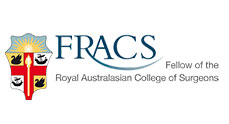What is Myofascial Release?
Myofascial release is a type of physical therapy commonly employed for the treatment of myofascial pain syndrome.
Myofascial pain syndrome is characterized by muscle pain, spasms, and tenderness in your myofascial tissues. These tissues surround and support the muscles throughout your body. The pain is usually asymmetrical and can affect a single muscle or group of muscles. Areas unrelated to the affected muscle may also become painful, a process called referred pain.
Myofascial pain syndrome usually develops in muscles that have been injured or overstressed by repetitive movements during sports or certain kinds of jobs. These muscles develop tight and tender areas called trigger points that when pressed cause pain throughout the muscle or referred pain in other parts of the body. Trigger points and myofascial pain syndrome are also common in those who lead stressful and anxious lives. Left untreated it can disrupt sleep and routine activities and could possibly lead to fibromyalgia, a more serious musculoskeletal condition causing widespread pain.
Myofascial release is a manual therapy using effective hands-on techniques in which gentle sustained pressure is applied to the areas of myofascial connective tissue tightness or restriction to alleviate pain and restore motion at the trigger points.
Indications for Myofascial Release
Myofascial release therapy can be indicated for the treatment of conditions such as carpal tunnel syndrome, fibromyalgia, migraine headaches, and temporomandibular joint (TMJ) disorder. In general, myofascial release therapy can be employed as an effective pain management technique for the treatment of pain in parts of the body such as:
- Shoulders
- Neck
- Head
- Arms
- Lower back
- Hips
- Thighs
- Feet
- Calves
Contraindications of Myofascial Release
You are not a good candidate for myofascial release if you:
- Have weak or fragile bones
- Are on blood-thinning medications
- Have deep vein thrombosis (DVT) or other issues with your veins
- Have broken or fractured bones
- Have painful wounds, injuries, or burns
Working Mechanism of Myofascial Release Therapy
Myofascial release therapy usually involves a massage therapy session performed by a chiropractor, trained physical therapist, or other medical practitioners.
During the session, your therapist will gently massage the myofascia and feel for tightened or rigid areas. Normal myofascia feels elastic and pliable. Your therapist will start stretching and massaging regions that feel tight or stiff using light manual pressure. The process is repeated several times on the trigger points until your therapist feels that the muscle tension is fully released. The areas that your therapist massages may not be close to where you feel the pain prominently or where the pain originates. Myofascial release works on the wider network of muscles that may be causing your pain. It attempts to mitigate tension throughout the body by releasing trigger points across a broad area of your muscular system.
Benefits of Myofascial Release
Some of the benefits of regular myofascial release include:
- Improved tissue elasticity
- Improved pain management
- Improved post-surgery complications
- Improved body relaxation
- Improved range of motion
- Improved blood circulation
- Alleviation of soreness with tissue recovery
- Relief of stress and tension
Risks and Complications of Myofascial Release
In general, myofascial release is a safe procedure; however, as with any procedure, some risks and complications may occur, such as:
- Nerve damage
- Internal bleeding
- Allergic reaction to lotions, gels, or oils used with massage
- Difficulty in moving the muscles or temporary paralysis





